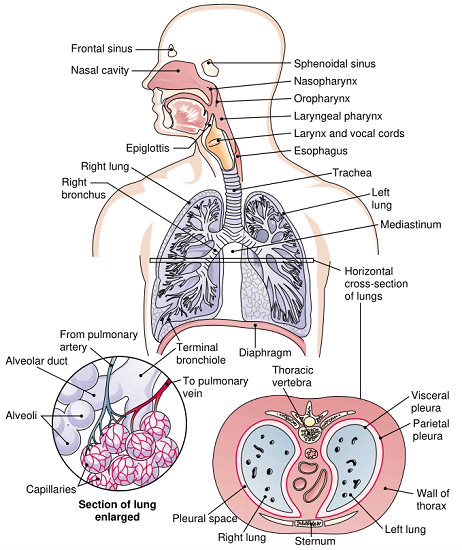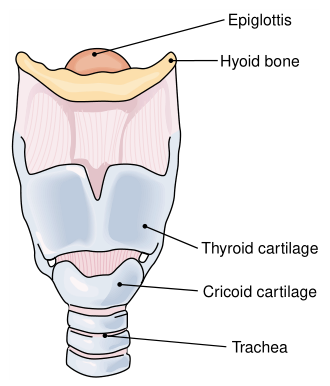- 签证留学 |
- 笔译 |
- 口译
- 求职 |
- 日/韩语 |
- 德语
Air is carried to and from the lungs in a series of tubes in which no gas exchange occurs. Refer to Figure 1 as you read the following description of the respiratory tract. Air enters through the nose, where it is warmed, filtered, and moistened as it passes over the hair-covered mucous membranes of the nasal cavity. Cilia, microscopic hairlike projections from the cells that line the nose, sweep dirt and foreign material toward the throat for elimination. Material that is eliminated from the respiratory tract by coughing or clearing the throat is called sputum.

FIGURE1. Respiratory system. (Reprinted with permission from Cohen BJ, Wood DL. Memmler's The Human Body in Health and Disease. 9th Ed. Philadelphia: Lippincott Williams & Wilkins, 2000.)
In the bones of the skull and face near the nose are air-filled cavities lined with mucous membranes that drain into the nasal cavity. These chambers lighten the bones and provide resonance for speech production. Each of these cavities is called a sinus, and they are named specifically for the bones in which they are located, such as the sphenoid, ethmoid, and maxillary sinuses. Together, because they are near the nose, these cavities are referred to as the paranasal sinuses (see Fig. 1).
Receptors for the sense of smell are located within bony side projections of the nasal cavity called turbinate bones or conchae.
Inhaled air passes into the throat, or pharynx, where it mixes with air that enters through the mouth and also with food destined for the digestive tract. The pharynx and associated structures are shown in Figure 2. The pharynx is divided into three regions: (1) an upper portion, the nasopharynx, behind the nasal cavity; (2) a middle portion, the oropharynx, behind the mouth; and (3) a lower portion, the laryngeal pharynx, behind the larynx. The palatine tonsils are on either side of the soft palate in the oropharynx; the pharyngeal tonsils, or adenoids, are in the nasopharynx.

FIGURE 2. The larnyx, anterior view. (Reprinted with permission from Cohen BJ, Wood DL. Memmler's The Human Body in Health and Disease. 9th Ed. Philadelphia: Lippincott Williams & Wilkins, 2000.)
责任编辑:admin
